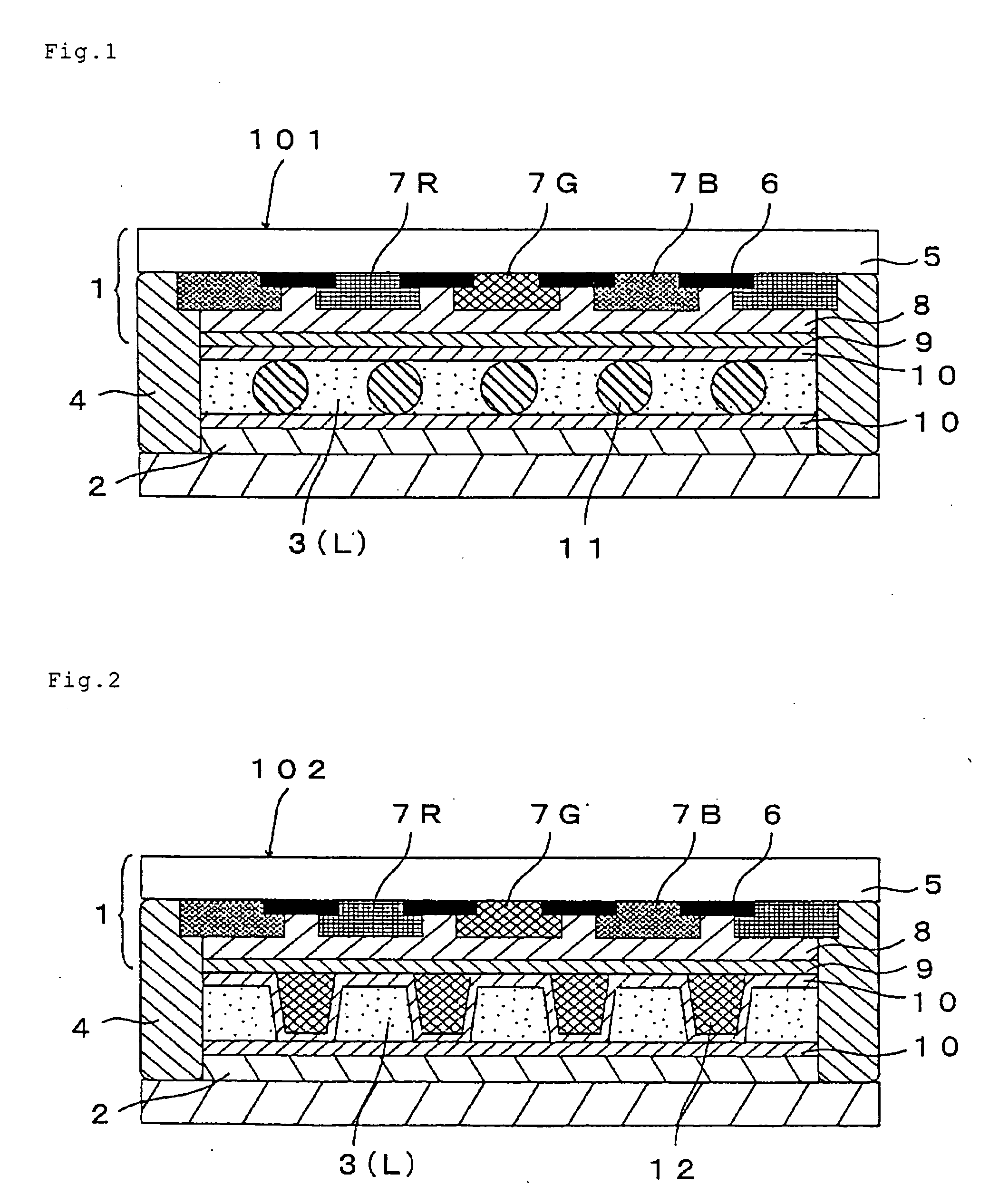Alkali-soluble maleimide copolymer and liquid crystal display comprising the same
a maleimide and copolymer technology, applied in the direction of optical filters, medical preparations, granular delivery, etc., can solve the problems of thermal yellowing, impairing transparency or color characteristics, and deteriorating image quality, and achieve excellent solvent solubility, high hardness, and excellent resistance to thermal yellowing
- Summary
- Abstract
- Description
- Claims
- Application Information
AI Technical Summary
Benefits of technology
Problems solved by technology
Method used
Image
Examples
example 1
Synthesis of an Alkali-Soluble Maleimide Polymer
A 3-L polymerization vessel was charged with 44 parts of diethylene glycol dimethyl ether (DMDG) as a solvent, the temperature was raised to 90° C. in a nitrogen atmosphere, and a solution, at 60° C., composed of 16 parts of cyclohexylmaleimide (CHMI) and 16 parts of diethylene glycol dimethyl ether (as dropping system 1), a mixture composed of 14 parts of methyl methacrylate (MMA), 10 parts of methacrylic acid (MAA) and 0.4 part of Perbutyl O (trademark, product of NOF Corp.) (as dropping system 2), and 0.5 part of n-dodecylmercaptan (as dropping system 3) were respectively fed to the polymerization vessel continuously over 3 hours. Thereafter, the temperature was maintained at 90° C. for 30 minutes and then raised to 105° C. and the polymerization was continued for 3 hours. The copolymer solution (copolymer 1 solution) was sampled for molecular weight determination by GPC. The weight average molecular weight (Mw) was 28,000. The un...
examples 2 and 3
Alkali-soluble maleimide-based copolymer solutions (copolymer 2 solution and copolymer 3 solution) were produced following the same procedure as in Example 1 except that the charges for polymerization were changed as specified in Table 1. The analytical values for the copolymers 2 and 3 are shown in Table 1.
example 4
Preparation of Curable Resin Composition 1
The copolymer 1 obtained in Example 1 was again dissolved in DMDG to give an alkali-soluble maleimide-based copolymer solution 1 with a solid matter content of 20%. A curable resin composition 1 was prepared by mixing up the materials shown below with stirring at room temperature. Alkali-soluble maleimide-based copolymer solution 1 (solid matter content 20%): 69.0 parts Dipentaerythritol pentaacrylate (product of Sartomer Co., trademark “SR 399”): 11.0 parts Orthocresol novolak-based epoxy resin (product of Yuka Shell Epoxy, trademark “Epikote 180 S 70”): 15.0 parts 2-Methyl-1-(4-methylthiophenyl)-2-morpholinopropanone-1: 2.1 parts 2,2′-Bis(o-chlorophenyl)-4,5,4′,5′-tetraphenyl-1,2′-biimidazole: 1.5 parts Diethylene glycol dimethyl ether: 66.0 parts
The curable resin composition 1 was evaluated by the following methods. The results are shown in Table 2.
(Cured Film Physical Property Evaluation)
A coat film having a dry thickness o...
PUM
| Property | Measurement | Unit |
|---|---|---|
| Temperature | aaaaa | aaaaa |
| Temperature | aaaaa | aaaaa |
| Length | aaaaa | aaaaa |
Abstract
Description
Claims
Application Information
 Login to View More
Login to View More - R&D
- Intellectual Property
- Life Sciences
- Materials
- Tech Scout
- Unparalleled Data Quality
- Higher Quality Content
- 60% Fewer Hallucinations
Browse by: Latest US Patents, China's latest patents, Technical Efficacy Thesaurus, Application Domain, Technology Topic, Popular Technical Reports.
© 2025 PatSnap. All rights reserved.Legal|Privacy policy|Modern Slavery Act Transparency Statement|Sitemap|About US| Contact US: help@patsnap.com

